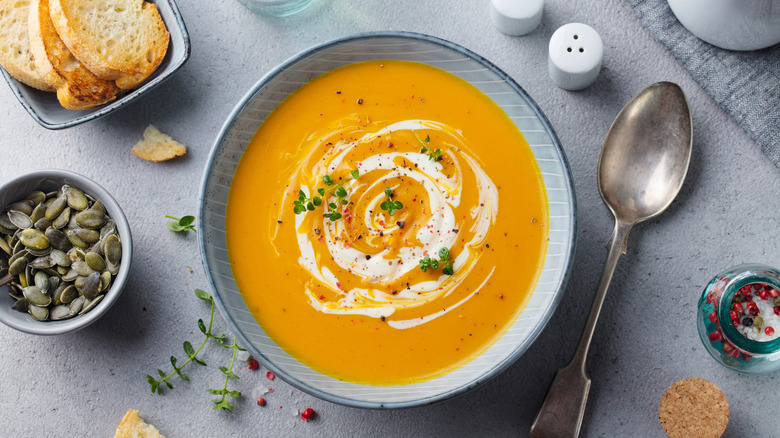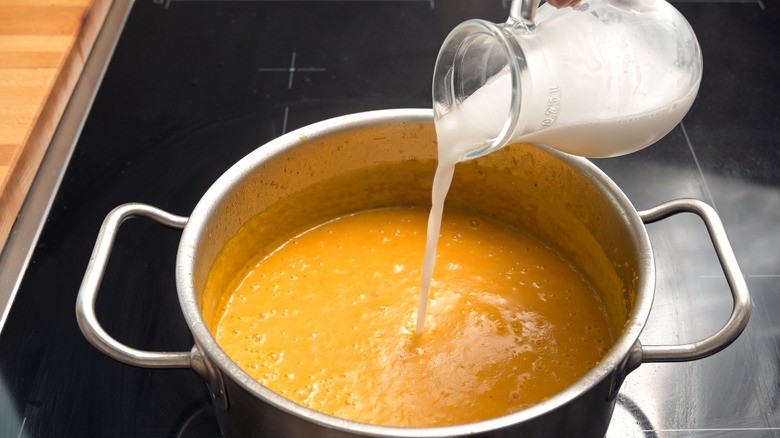The Common Mistake To Avoid When Boiling Pumpkin Soup
Few soups scream fall the way pumpkin soup does. This seasonal dish makes use of this winter squash in a way few other recipes do; however, pumpkin soup is not a meal that is easily thrown together. It takes a little TLC and patience to get right. Removing the seeds and chopping your pumpkin up before you boil it is the first step to getting this soup started. It's great to use a vegetable or chicken broth as your liquid because as the pumpkin boils, it will impart some of its flavors to the broth, creating the perfect base.
Once your pumpkin is soft, it is time to let it cool and then take your immersion blender to it to create a smooth puree. At this point, you are ready to add the heavy cream, but be careful here, because if you boil your pumpkin soup at this point, it will lose its velvety texture as the cream and pumpkin separate due to the extreme temperature change. Why does this happen? When cream is boiled and the temperature is brought up too quickly, the cream curdles. This is why it is important to take a step to prevent this problem.
Low and slow
The result of adding your cream too quickly is a granular texture that is not going to sit well with your taste buds. When the milk reaches temperatures that are excessive, the casein thickens, which is why the lumps and bumps form and ultimately you get a diluted, water-downed pumpkin soup that will not meet your mouth's expectations.
Exercise a little care when it comes to adding the cream. Instead of pouring the cream in all at once, you need to keep the heat low and add it slowly. This will give the cream the opportunity to heat at the same rate as your pumpkin puree. If you are short on time, you could simultaneously warm the cream while making the pumpkin puree. This way it is already warm before you add it to the mix and the temperature change will not be a shock to your dairy.

